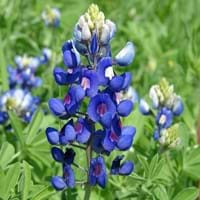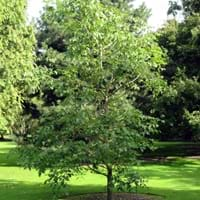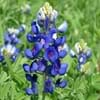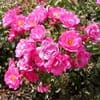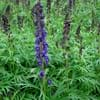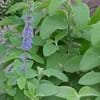Life Span
Perennial
Perennial
Type
Flowering Plants
Trees
Origin
Mediterranean, North Africa, Northern America
Asia, Europe, North America
Types
Anthony Peak Lupine, Silver Bush, Garden Lupine, Spider Lupine, Adonis Lupine
Black Ash, Blue Ash, California Ash, Carolina Ash, European Ash
Habitat
Pine barrens, Sandy areas
Forest edges, Hillside, Woods
USDA Hardiness Zone
3-7
3-9
Sunset Zone
1a, 1b, 2a, 2b, 3a, 3b, 4, 5, 6, 7, 14, 15, 16, 17
9, 12, 13, 14, 15, 16, 17, 18, 19, 20, 21, 22, 23, 24
Habit
Upright/Erect
Oval or Rounded
Flower Color
Blue, Pink, White
White
Flower Color Modifier
Not Available
Not Available
Fruit Color
Not Available
Not Available
Leaf Color in Spring
Light Green
Dark Green
Leaf Color in Summer
Green
Dark Green
Leaf Color in Fall
Green
Dark Green
Leaf Color in Winter
Not Available
Dark Green
Leaf Shape
Oblovate
Oblovate
Plant Season
Summer
All year
Sunlight
Full Sun, Part sun
Full Sun, Part sun
Type of Soil
Loose, Moist
Loamy, Sandy
The pH of Soil
Slightly Acidic
Acidic
Soil Drainage
Well drained
Well drained
Bloom Time
Late Spring, Summer
Late Spring, Spring
Tolerances
Not Available
Drought, Pollution, Soil Compaction
Where to Plant?
Ground
Ground
How to Plant?
Seedlings
Grafting, Seedlings, Stem Planting, Transplanting
Plant Maintenance
Medium
Medium
Watering Requirements
Form a Soil ring to water efficiently, Keep the ground moist but not water-logged, Requires a lot of watering, Water in morning to avoid prompting diseases
Does not require lot of watering, Medium, Prefer drip-irrigation instead of Over-head watering
In Summer
Lots of watering
Lots of watering
In Spring
Moderate
Moderate
In Winter
Average Water
Average Water
Soil pH
Slightly Acidic
Acidic
Soil Type
Loose, Moist
Loamy, Sandy
Soil Drainage Capacity
Well drained
Well drained
Sun Exposure
Full Sun, Part sun
Full Sun, Part sun
Pruning
Prune ocassionally
Prune in winter, Prune prior to new growth
Fertilizers
All-Purpose Liquid Fertilizer
All-Purpose Liquid Fertilizer
Pests and Diseases
Aphids, Fusarium wilt, Root rot, Thripes
Bark splits, Crown gall, Epicormic Sprouting, Woodpecker feeding
Plant Tolerance
Drought
Drought
Flower Petal Number
Single
Single
Foliage Texture
Medium
Medium
Foliage Sheen
Matte
Glossy
Allergy
Abdominal pain, Asthma, Nausea, Swelling in the face, Vomiting
Not Available
Aesthetic Uses
Showy Purposes
Not Available
Beauty Benefits
Not Available
Not Available
Environmental Uses
Air purification
Air purification
Medicinal Uses
Anthelmintic, Diuretic, Treatment of ulcers
Fever, Liver problems
Part of Plant Used
Flowers, Seeds
Leaves, Stem
Other Uses
Showy Purposes, Used as Ornamental plant, Used for fragrance
Used as Ornamental plant
Used As Indoor Plant
No
No
Used As Outdoor Plant
Yes
Yes
Garden Design
Bedding Plant, Container, Feature Plant, Foundation, Rock Garden
Shady Tree, Showy Tree
Botanical Name
Lupinus
Fraxinus
Common Name
Hybrid Lupine
Ash Tree
In Hindi
वृक संयंत्र
राख पेड़
In French
usine de lupin
Frêne
In Spanish
planta de lupino
Fresno
In Greek
φυτό λούπινο
δέντρο Ash
In Portuguese
tremoço planta
Freixo
In Polish
łubin roślin
Jesion
In Latin
Plinio herba
Fraxinum
Phylum
Magnoliophyta
Anthophyta
Class
Magnoliopsida
Magnoliopsida
Clade
Not Available
Angiosperms, Asterids, Eudicots
Tribe
Not Available
Oleeae
Subfamily
Faboideae
Not Available
Importance of Lupine and Ash Tree
Want to have the most appropriate plant for your garden? You might want to know the importance of Lupine and Ash Tree. Basically, these two plants vary in many aspects. Compare Lupine and Ash Tree as they differ in many characteristics such as their life, care, benefits, facts, etc. Every gardener must at least have the slightest clue about the plants he wants to plant in his garden. Compare their benefits, which differ in many ways like facts and uses. The medicinal use of Lupine is Anthelmintic, Diuretic and Treatment of ulcers whereas of Ash Tree is Fever and Liver problems. Lupine has beauty benefits as follows: Not Available while Ash Tree has beauty benefits as follows: Not Available.
Compare Facts of Lupine vs Ash Tree
How to choose the best garden plant for your garden depending upon its facts? Here garden plant comparison will help you to solve this query. Compare the facts of Lupine vs Ash Tree and know which one to choose. As garden plants have benefits and other uses, allergy is also a major drawback of plants for some people. Allergic reactions of Lupine are Abdominal pain, Asthma, Nausea, Swelling in the face and Vomiting whereas of Ash Tree have Not Available respectively. Having a fruit bearing plant in your garden can be a plus point of your garden. Lupine has no showy fruits and Ash Tree has no showy fruits. Also Lupine is flowering and Ash Tree is flowering. You can compare Lupine and Ash Tree facts and facts of other plants too.
